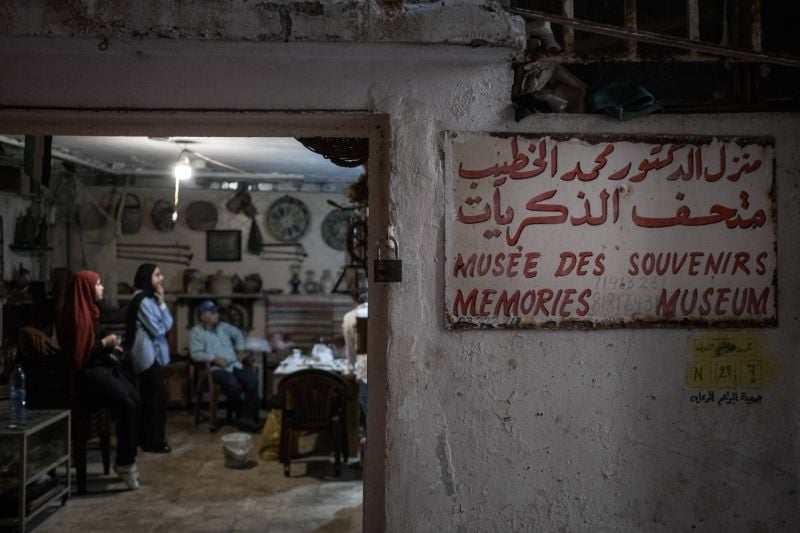
The Memories Museum in Beirut’s Shatila Palestinian refugee camp. Housed in a somewhat hidden alleyway, it contains hundreds of everyday items brought by Palestinian refugees in 1948 and later donated to museum founder Muhammad al-Khatib. May 10, 2023. (Credit: João Sousa/L’Orient Today)
Photos by João Sousa, writing by Madeline Edwards
SHATILA CAMP — Old clay cooking pots, dowry jewelry boxes, women’s wooden combs adorned with animated characters from a bygone era. Farmers’ wheat scythes still caked in dirt. And, of course, about a dozen rusted house keys for homes that likely no longer exist.
Some of the 600 or so pre-1948 Palestinian items preserved by the Memories Museum in Beirut’s Shatila refugee camp have paper labels tied to them, explaining who they once belonged to in fading handwritten ink.
But most items line the shelves and cracked glass display cases with no names attached, each nevertheless telling a story of violent displacement 75 years ago, when the founding of Israel drove 750,000 Palestinians from their homes.
Palestinians and others across the Arab world still refer to those events in 1948 as the Nakba, or “catastrophe,” commemorated each year on May 15. Thousands of those displaced in the Nakba ended up in Lebanon, including here in the Shatila refugee camp.
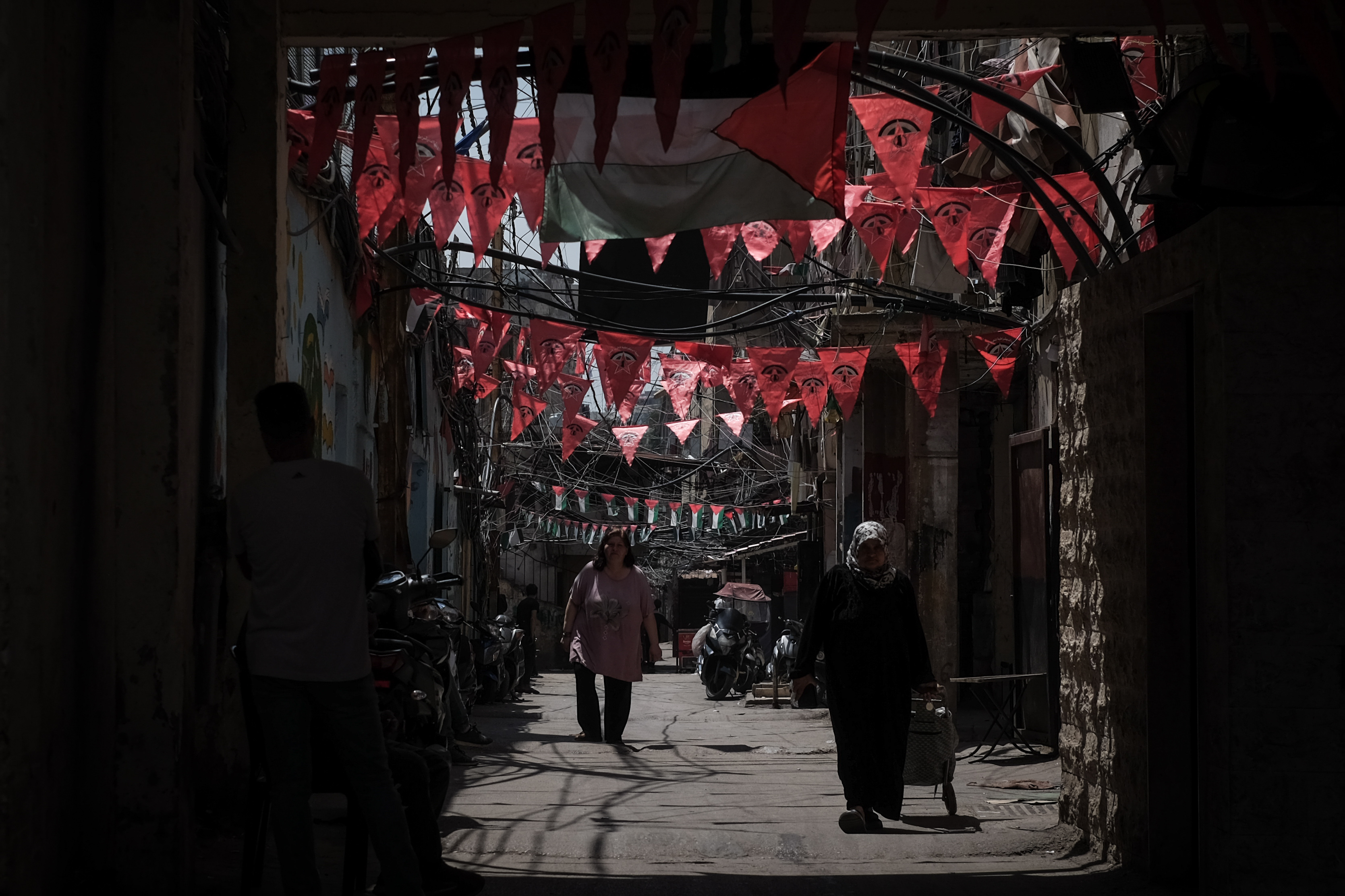 Flags bearing the logo of the Democratic Front for the Liberation of Palestine, a Marxist group, adorn a side street in the Shatila camp. May 10, 2023. (Credit: João Sousa/L’Orient Today)
Flags bearing the logo of the Democratic Front for the Liberation of Palestine, a Marxist group, adorn a side street in the Shatila camp. May 10, 2023. (Credit: João Sousa/L’Orient Today)
Camp resident Muhammad al-Khatib founded the Memories Museum in 2005 by collecting old family heirlooms from Palestinians in camps across Lebanon and Syria. He was six months old in 1948, when his own family fled Palestine for Lebanon “with only the clothes on our backs” and a few house keys, he tells L’Orient Today.
“This is a type of heritage,” Khatib says of the mostly everyday objects in his museum. “They are a form of proof that we existed on that land.”
Most camp residents no longer have the possessions their families brought with them from Palestine, when they thought they’d only be gone a few days.
Those few days turned into years, and tented displacement camps calcified into concrete urban neighborhoods. Priceless coffee pots, housekeys and tools brought over from Palestine were lost to war, massacres, Israeli airstrikes and, simply, the passage of time.
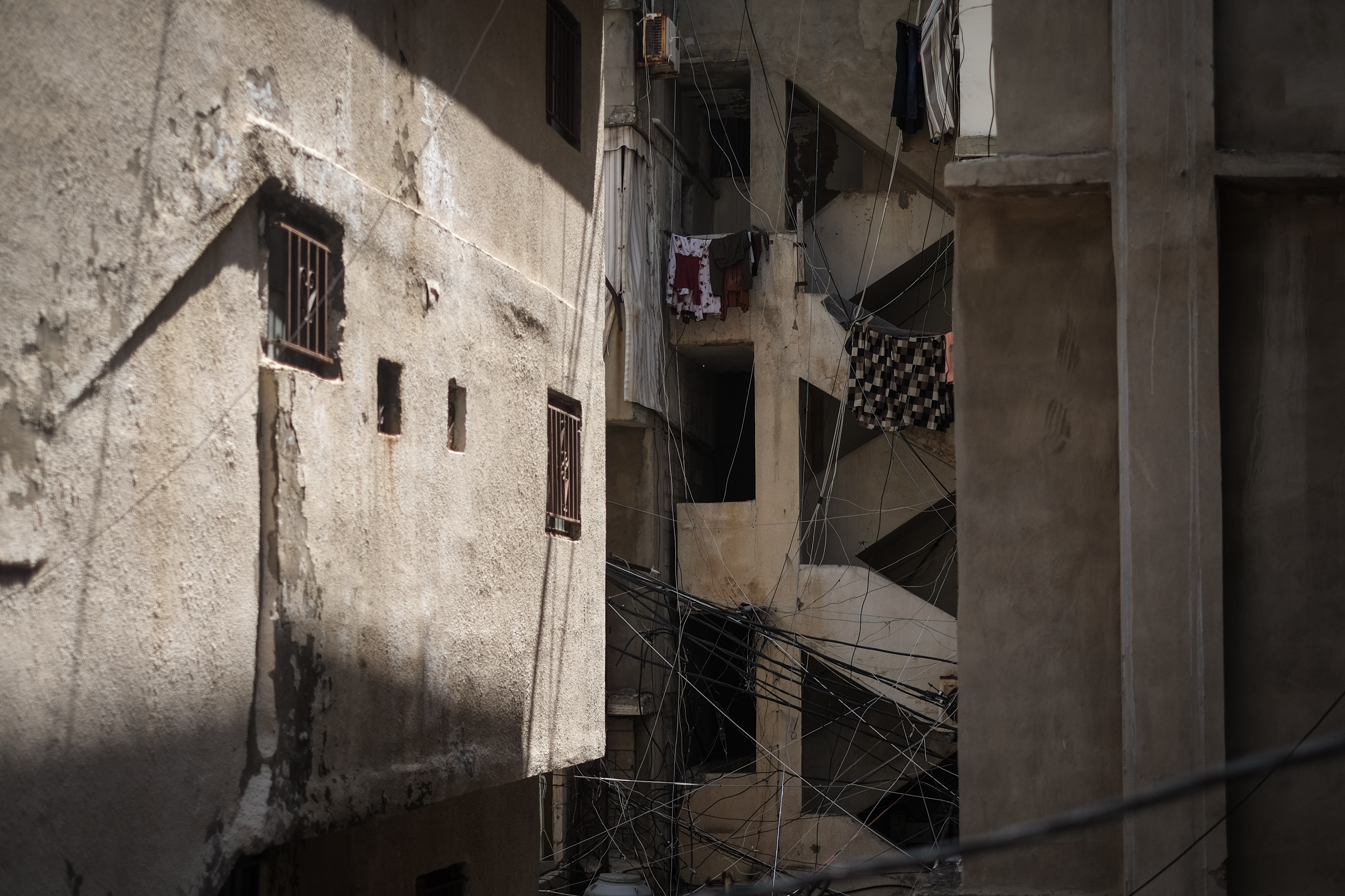 A residential alleyway in the Shatila camp. May 10, 2023. (Credit: João Sousa/L’Orient Today)
A residential alleyway in the Shatila camp. May 10, 2023. (Credit: João Sousa/L’Orient Today)
One Shatila resident, 57-year-old Mahasser Shahrour says she remembers the house key her grandmother brought with her from the town of Safad in 1948.
For years, she kept the key in her home in the Rashidieh refugee camp near Sour, in South Lebanon. But an Israeli airstrike in the 1980s destroyed that house, killing Mahasser’s grandmother.
The key was lost in the rubble.
Another woman, 73-year-old Efan Shehadeh, says her family brought an old cooking pot with them from their now-abandoned home village of Kweikat, Palestine, but it was later stolen in Lebanon.
Those losses have resurfaced in recent weeks, amid deadly Israeli airstrikes on Gaza and military raids within the occupied West Bank.
On Wednesday, during L’Orient Today’s visit to Shatila, TV sets in salons and shops show breaking news broadcasts of the strikes on Gaza. Threats of retaliation by Hamas’ Lebanese branch also raised fears of tensions in Lebanon.
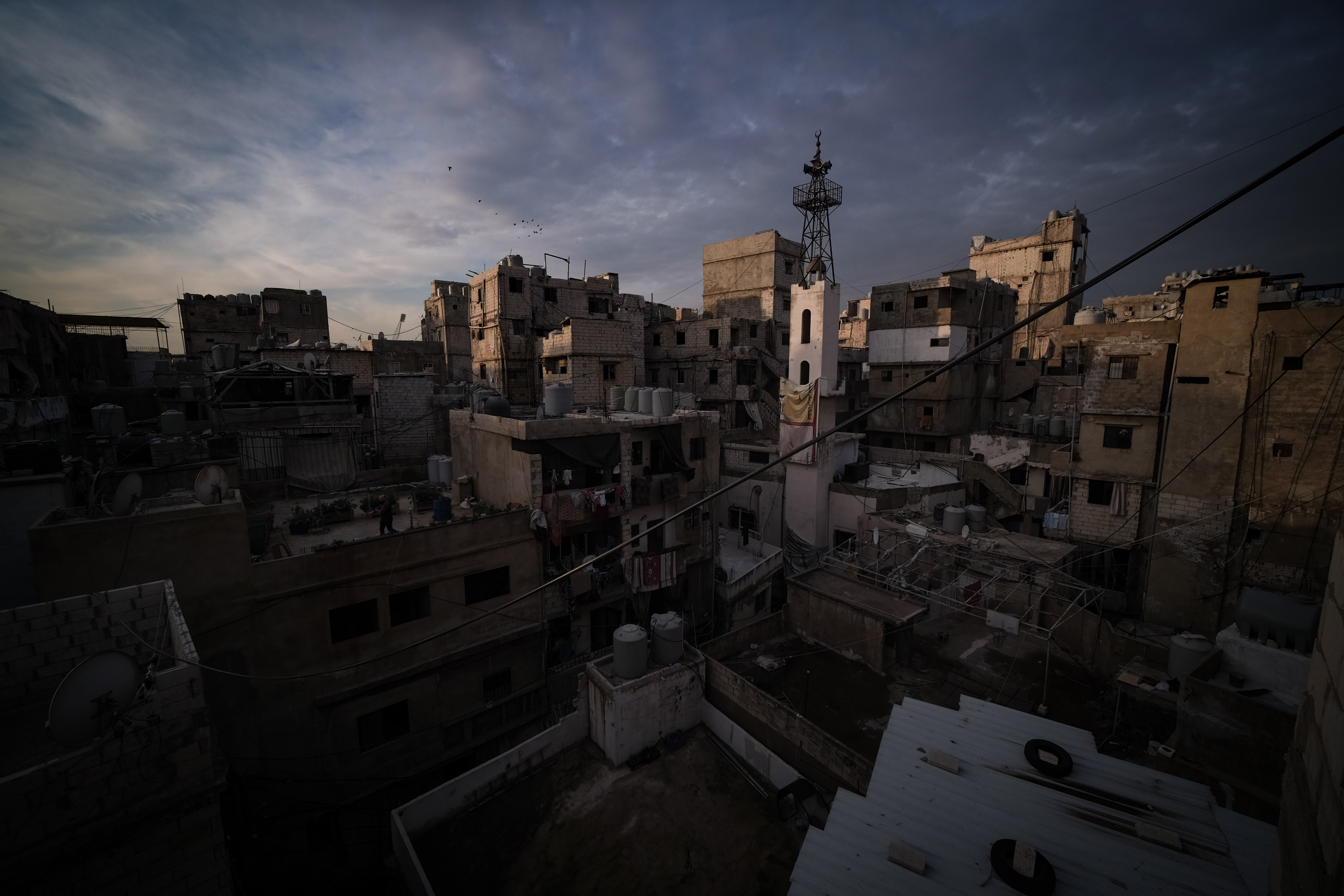 The Shatila Palestinian refugee camp just south of Beirut. May 10, 2023. (Credit: João Sousa/L’Orient Today)
The Shatila Palestinian refugee camp just south of Beirut. May 10, 2023. (Credit: João Sousa/L’Orient Today)
A barbershop customer, 50-year-old Salah Sukkar, watches the Gaza strikes on TV. He says his own family has no possessions left from Palestine. Salah was just old enough in 1982 to remember the brutal massacre by Israeli-backed Lebanese forces on Shatila. He fled the camp with his grandfather.
Does he still feel a connection to Palestine, even without any family artifacts from home?
“How could I not?” he says. “It’s my country.”
Below, L’Orient Today documents some of the Palestinian family belongings preserved in Shatila’s Memories Museum:
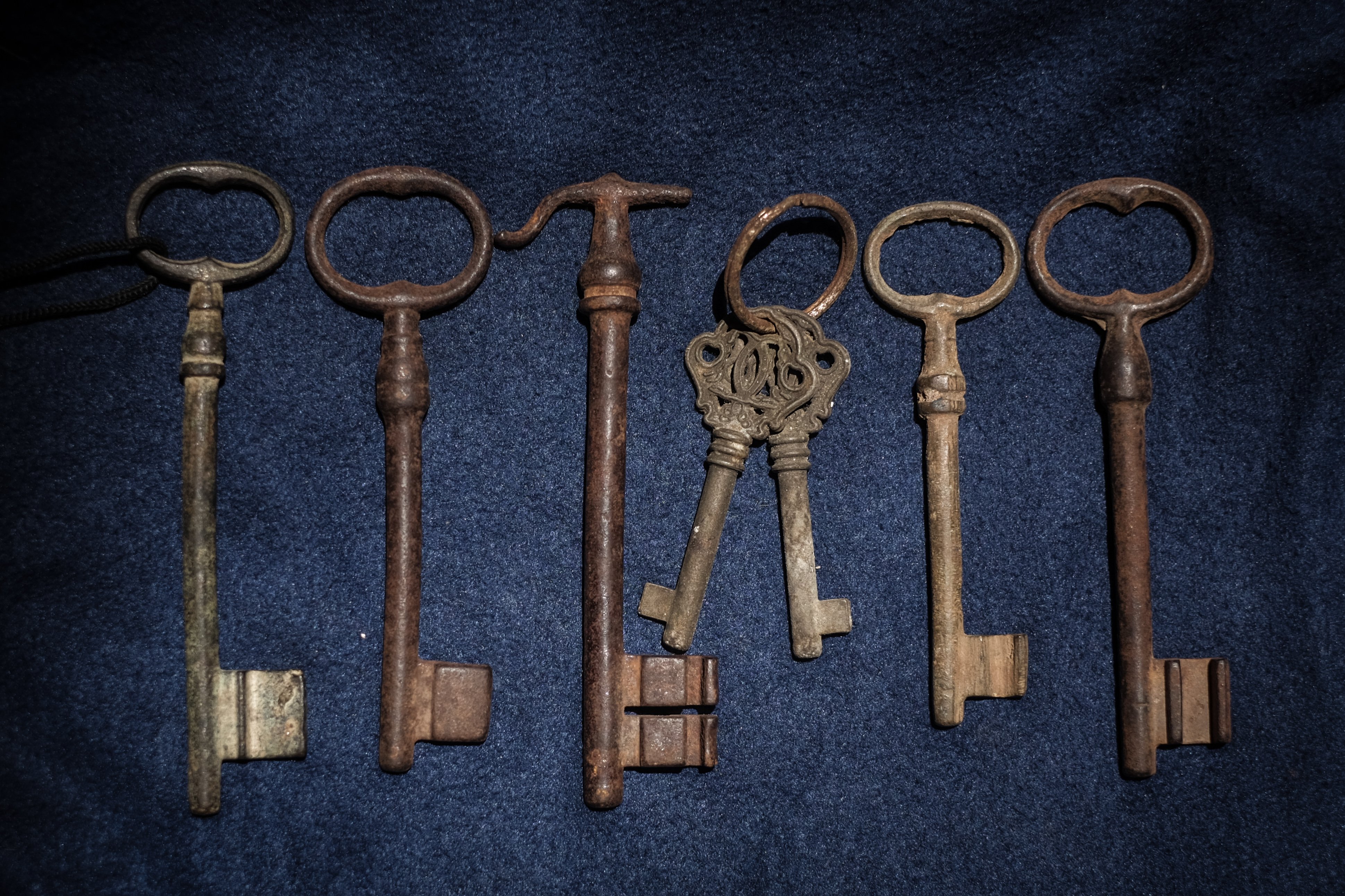 Keys that once belonged to homes in pre-Nakba Palestine. May 10, 2023. (Credit: João Sousa/L’Orient Today)
Keys that once belonged to homes in pre-Nakba Palestine. May 10, 2023. (Credit: João Sousa/L’Orient Today)
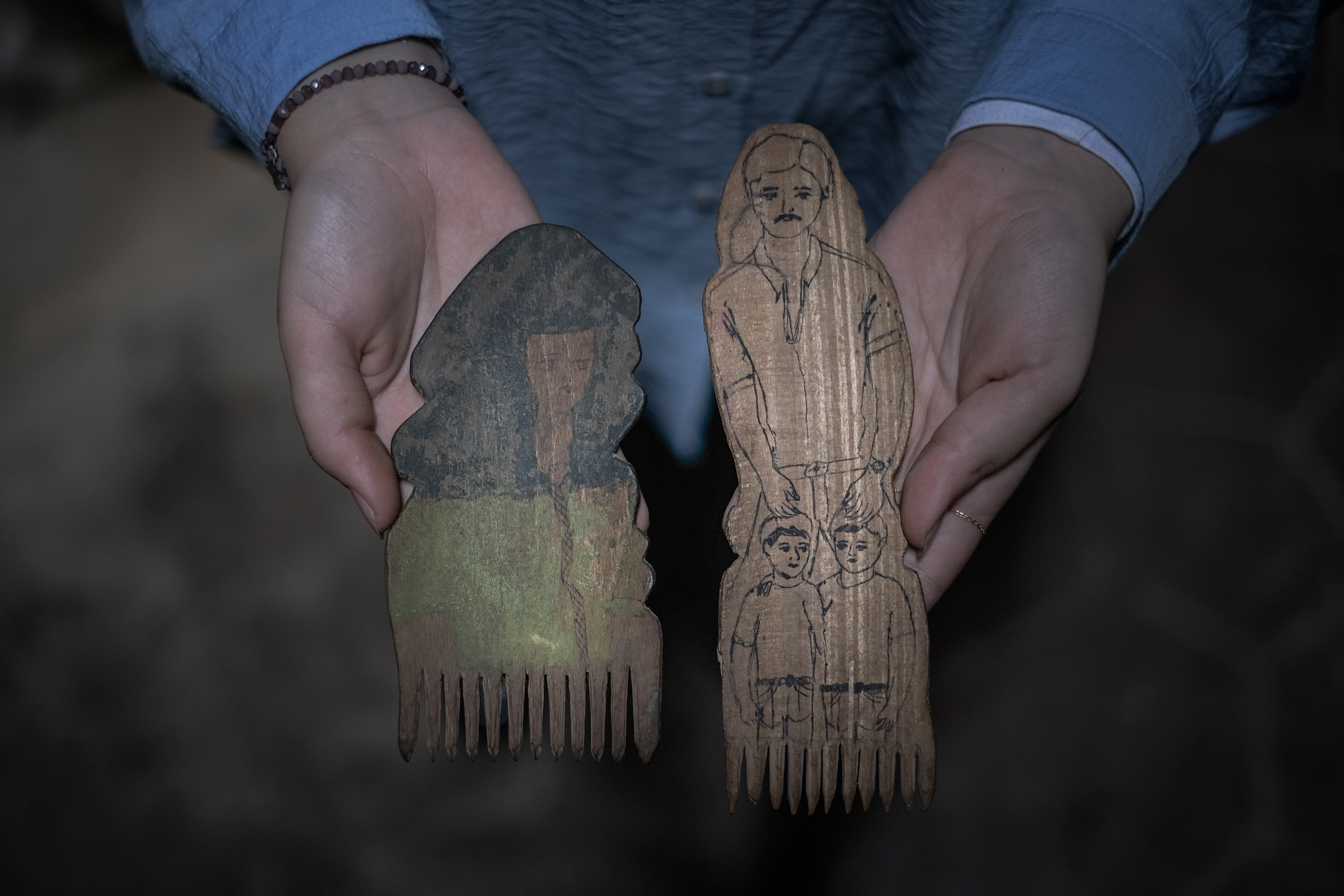 Hanan Farhat, a young Palestinian activist and volunteer in Shatila, holds a pair of women’s wooden hair combs from the Memories Museum. May 10, 2023. (Credit: João Sousa/L’Orient Today)
Hanan Farhat, a young Palestinian activist and volunteer in Shatila, holds a pair of women’s wooden hair combs from the Memories Museum. May 10, 2023. (Credit: João Sousa/L’Orient Today)
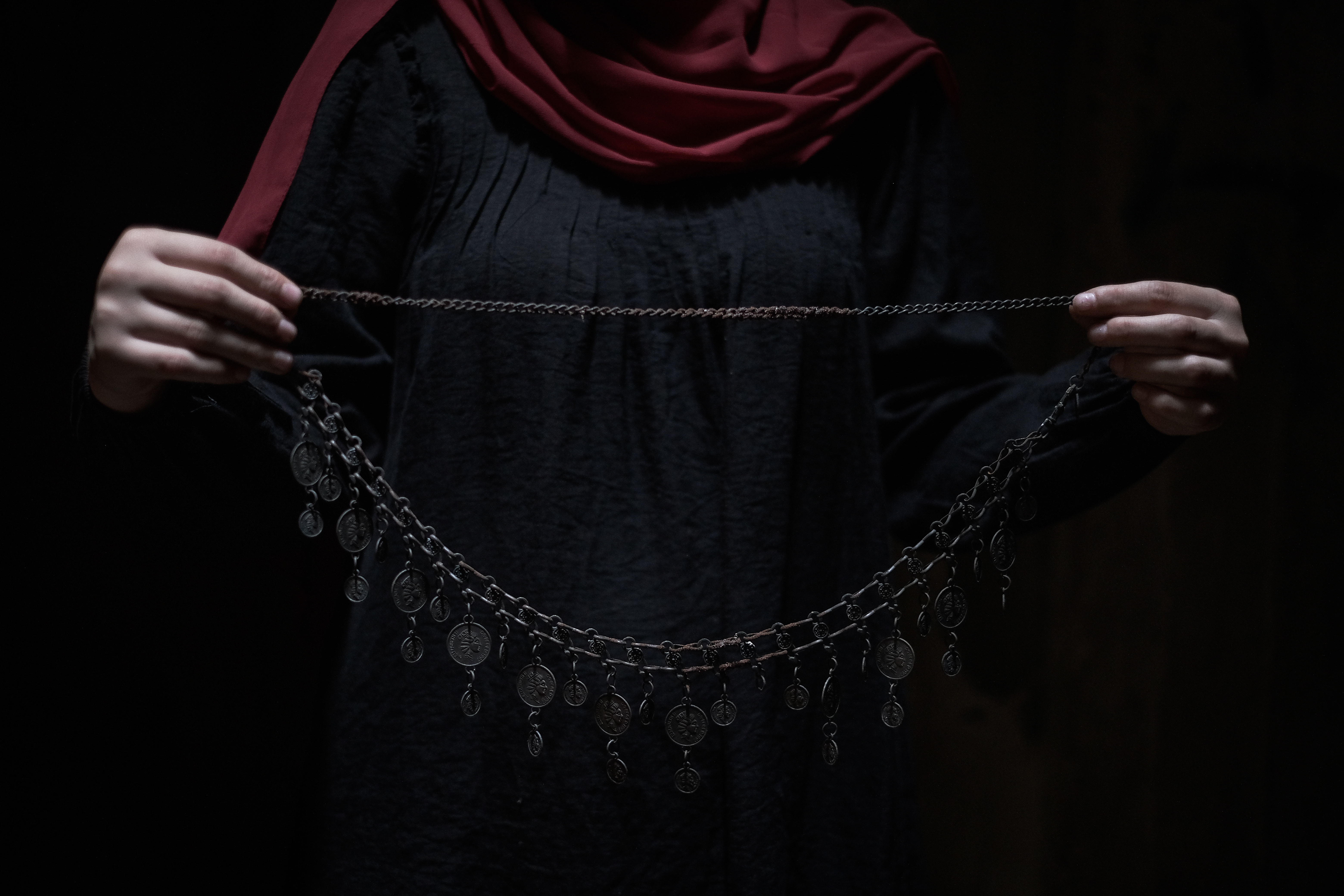 Aya Hazina, a young Palestinian activist and volunteer in Shatila, holds up a women’s necklace stored in the Memories Museum. May 10, 2023. (Credit: João Sousa/L’Orient Today)
Aya Hazina, a young Palestinian activist and volunteer in Shatila, holds up a women’s necklace stored in the Memories Museum. May 10, 2023. (Credit: João Sousa/L’Orient Today)
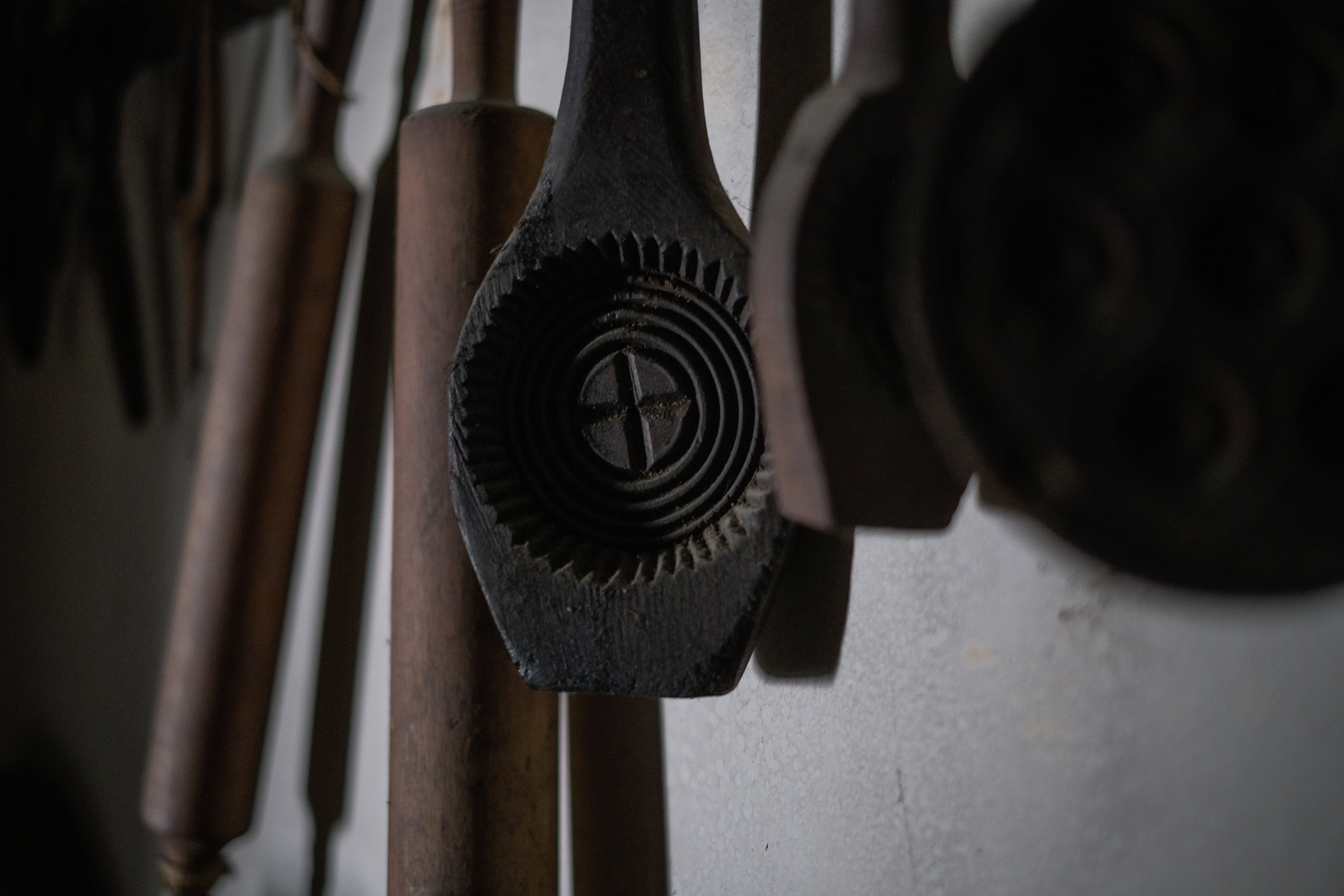 Wooden moulds once used for making maamoul cookies, usually eaten on holidays and at celebrations. May 10, 2023. (Credit: João Sousa/L’Orient Today)
Wooden moulds once used for making maamoul cookies, usually eaten on holidays and at celebrations. May 10, 2023. (Credit: João Sousa/L’Orient Today)
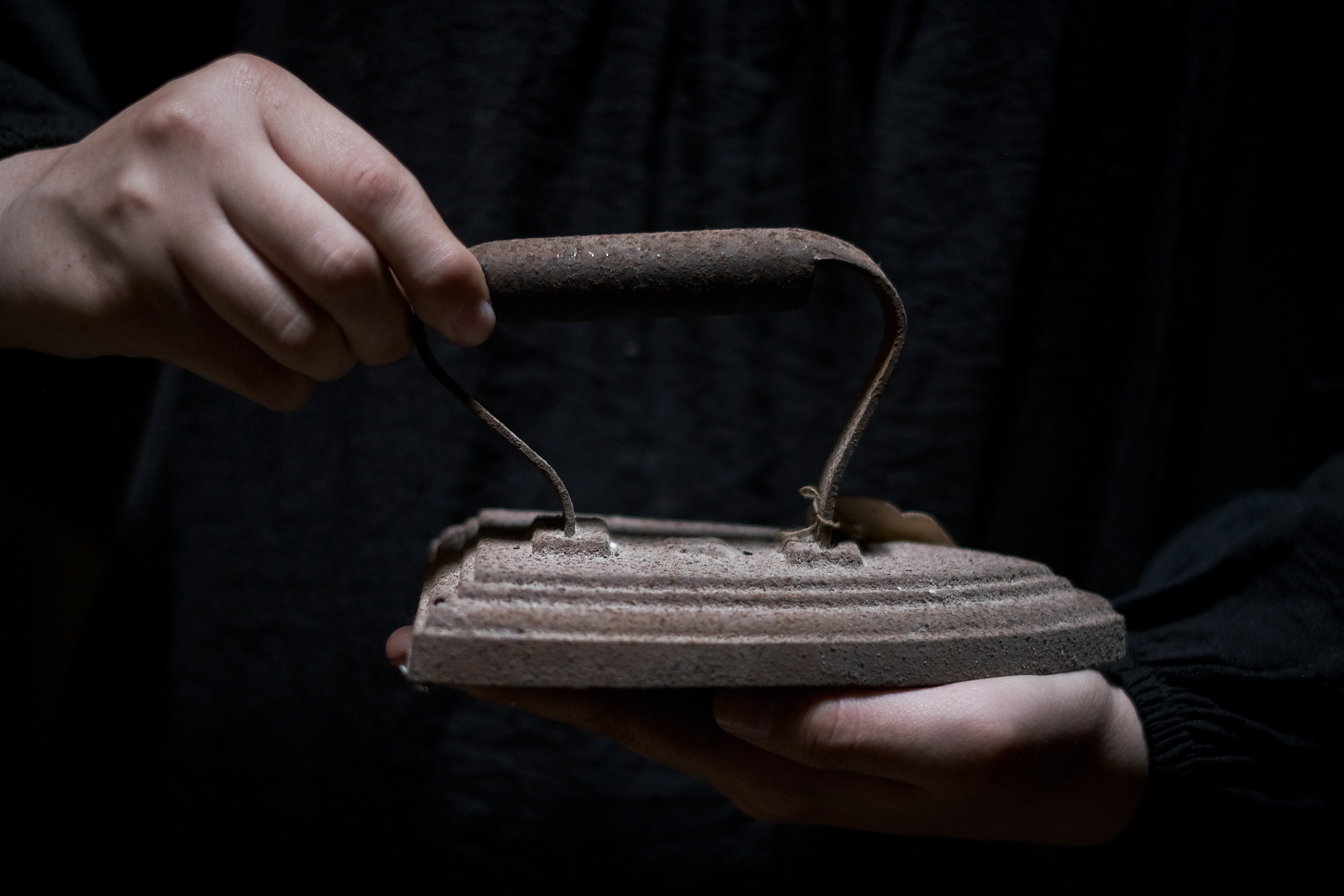 Aya Hazina, a young Palestinian activist and volunteer in Shatila, holds up a clothing iron stored in the Memories Museum. May 10, 2023. (Credit: João Sousa/L’Orient Today)
Aya Hazina, a young Palestinian activist and volunteer in Shatila, holds up a clothing iron stored in the Memories Museum. May 10, 2023. (Credit: João Sousa/L’Orient Today)
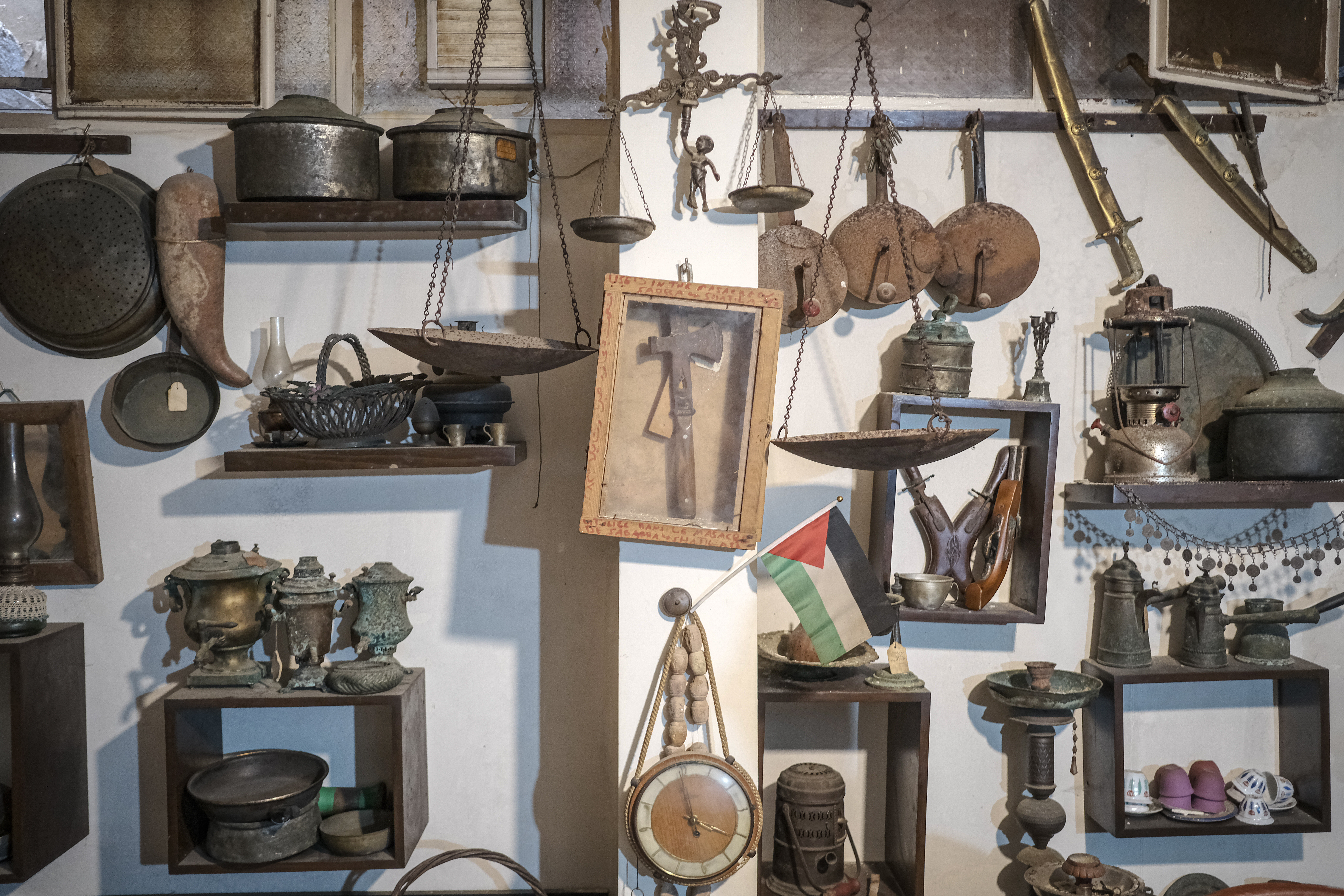 Items on display at the Memories Museum in the Shatila camp. Ali al-Khatib, brother of museum founder Muhammad al-Khatib, explains that the hatchet was found bloodied among the bodies of camp residents murdered in the 1982 Sabra and Shatila massacre. Asked why it’s important to display such an object among other, happier items such as hair combs and coffee pots, Ali says: “It’s our history.” May 10, 2023. (Credit: João Sousa/L’Orient Today)
Items on display at the Memories Museum in the Shatila camp. Ali al-Khatib, brother of museum founder Muhammad al-Khatib, explains that the hatchet was found bloodied among the bodies of camp residents murdered in the 1982 Sabra and Shatila massacre. Asked why it’s important to display such an object among other, happier items such as hair combs and coffee pots, Ali says: “It’s our history.” May 10, 2023. (Credit: João Sousa/L’Orient Today)
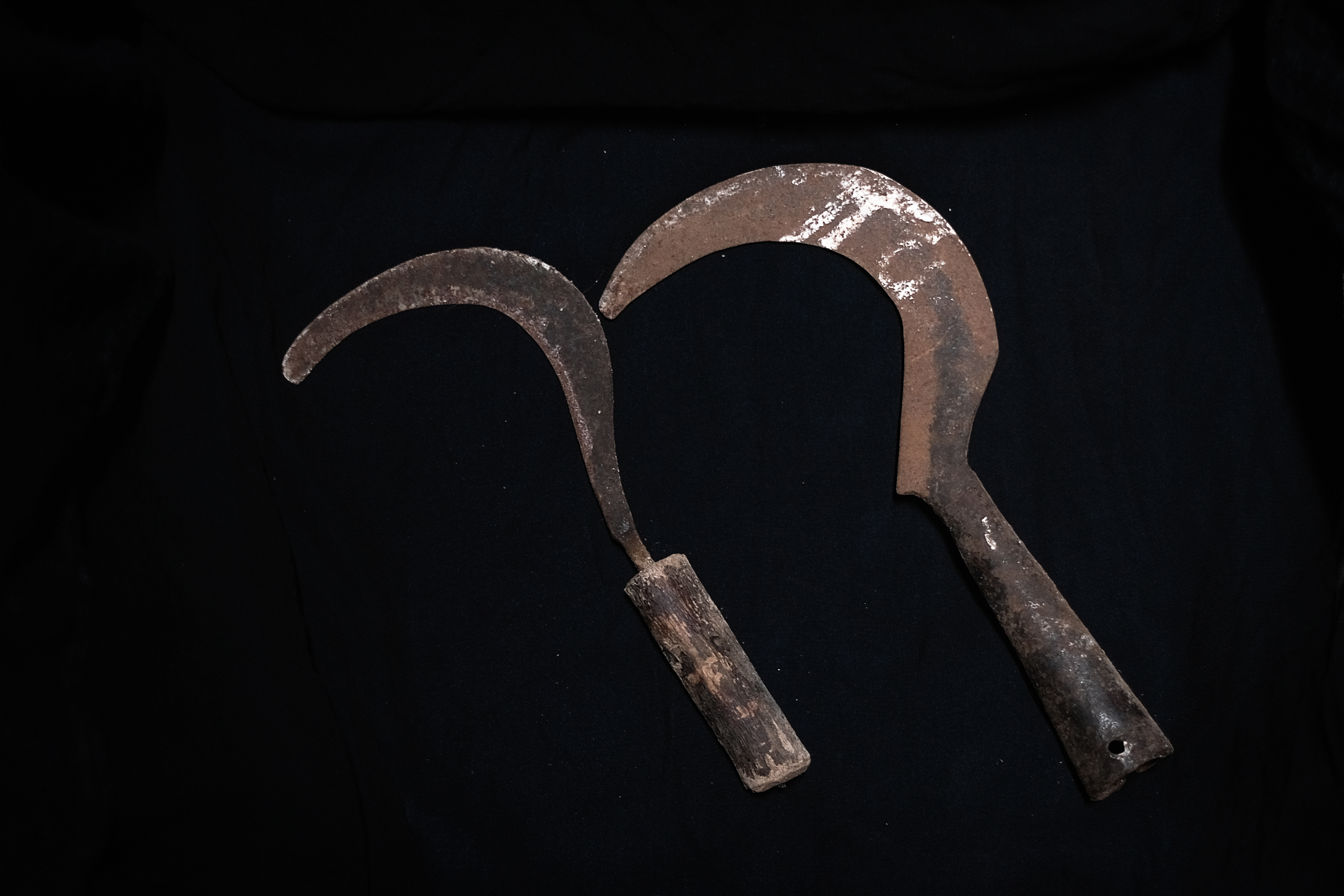 Rusted scythes once used by farmers in Palestine for harvesting wheat. Ali explains that farmers forced from their homes in 1948 brought the scythes with them in case they’d be staying in Lebanon for long and would need the tools to continue making a living. May 10, 2023. (Credit: João Sousa/L’Orient Today)
Rusted scythes once used by farmers in Palestine for harvesting wheat. Ali explains that farmers forced from their homes in 1948 brought the scythes with them in case they’d be staying in Lebanon for long and would need the tools to continue making a living. May 10, 2023. (Credit: João Sousa/L’Orient Today)
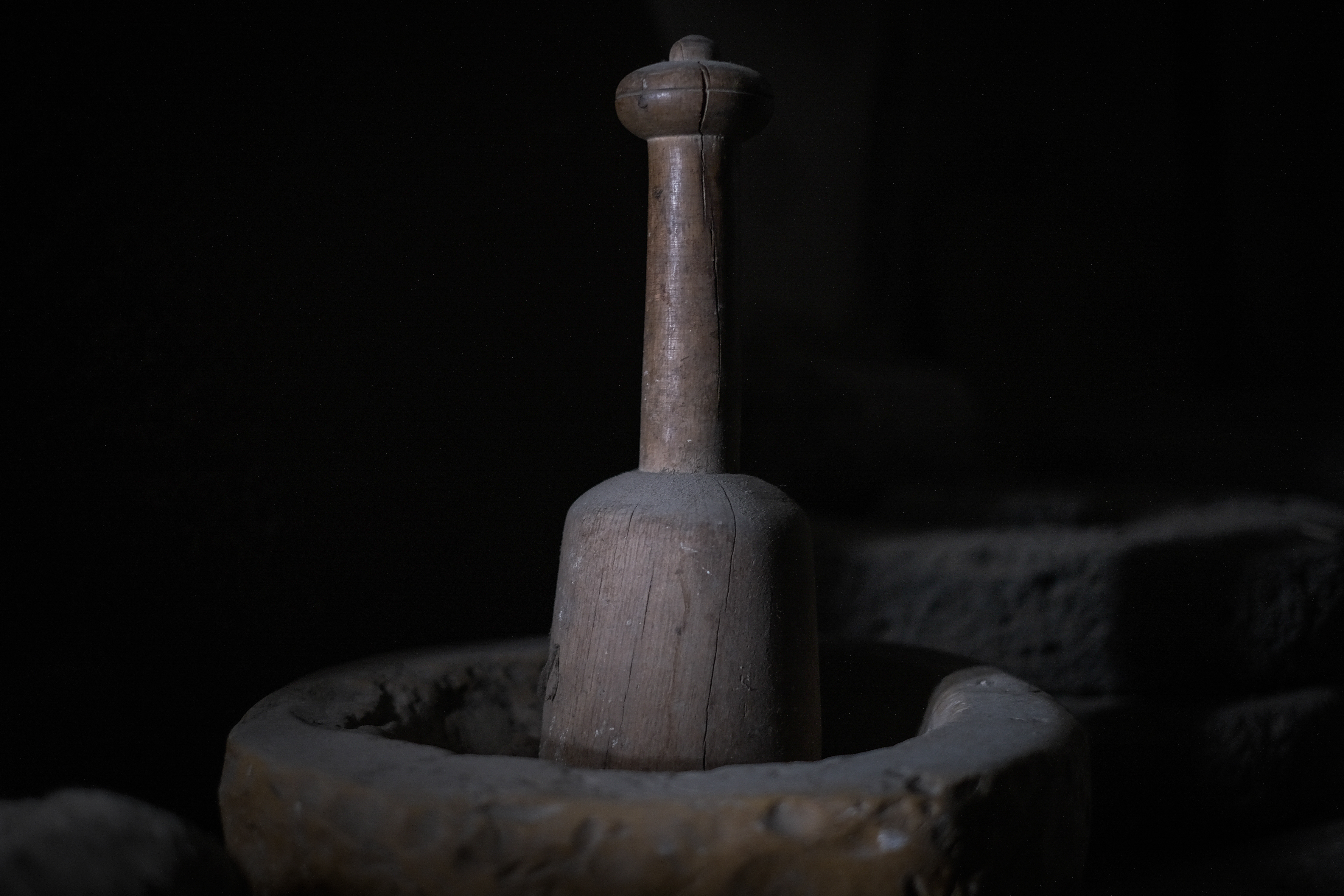 A mortar and pestle once used for making flour. May 10, 2023. (Credit: João Sousa/L’Orient Today)
A mortar and pestle once used for making flour. May 10, 2023. (Credit: João Sousa/L’Orient Today)
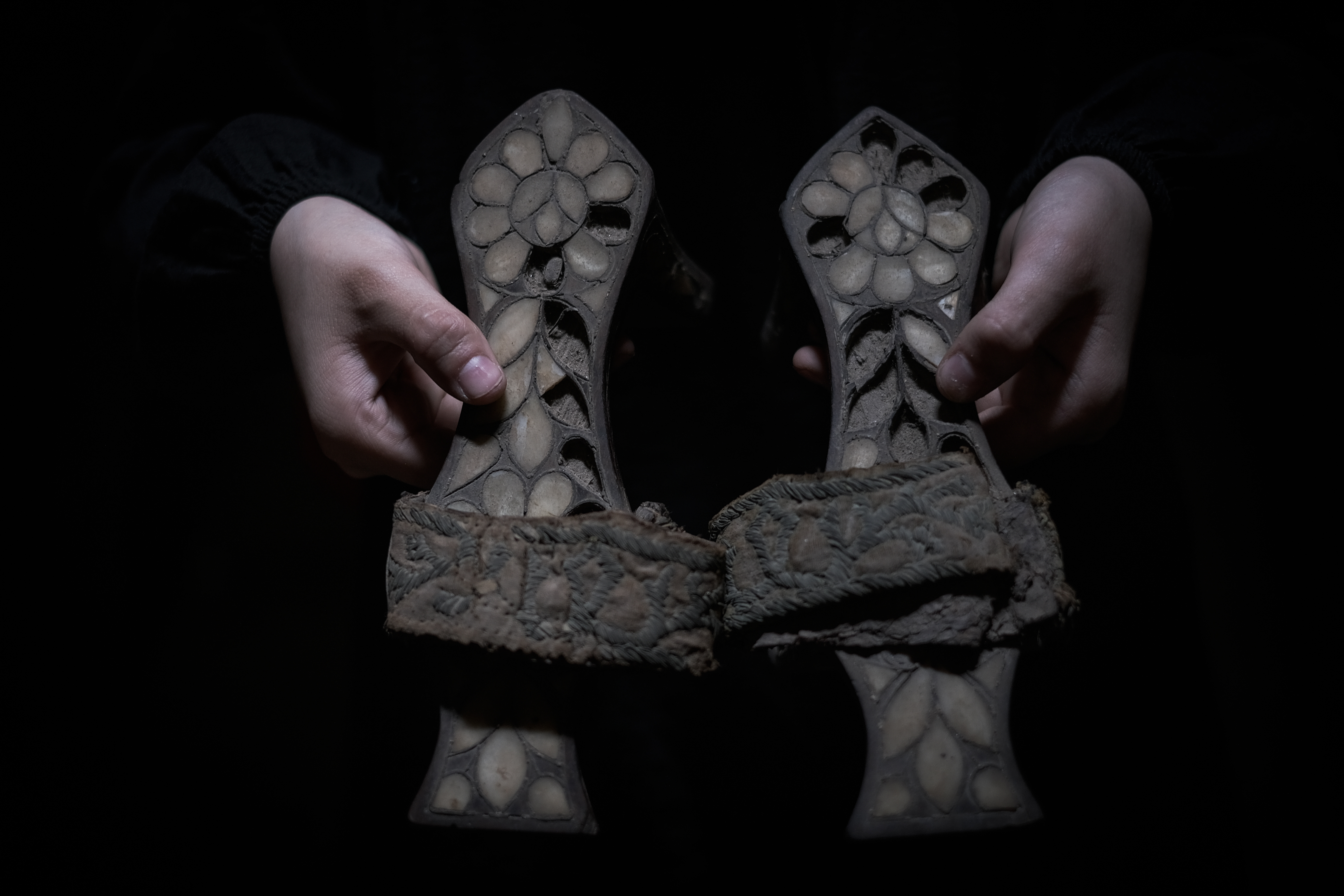 Aya Hazina, a young Palestinian activist and volunteer in Shatila, holds up a pair of women's platform wedding shoes. May 10, 2023. (Credit: João Sousa/L’Orient Today)
Aya Hazina, a young Palestinian activist and volunteer in Shatila, holds up a pair of women's platform wedding shoes. May 10, 2023. (Credit: João Sousa/L’Orient Today)
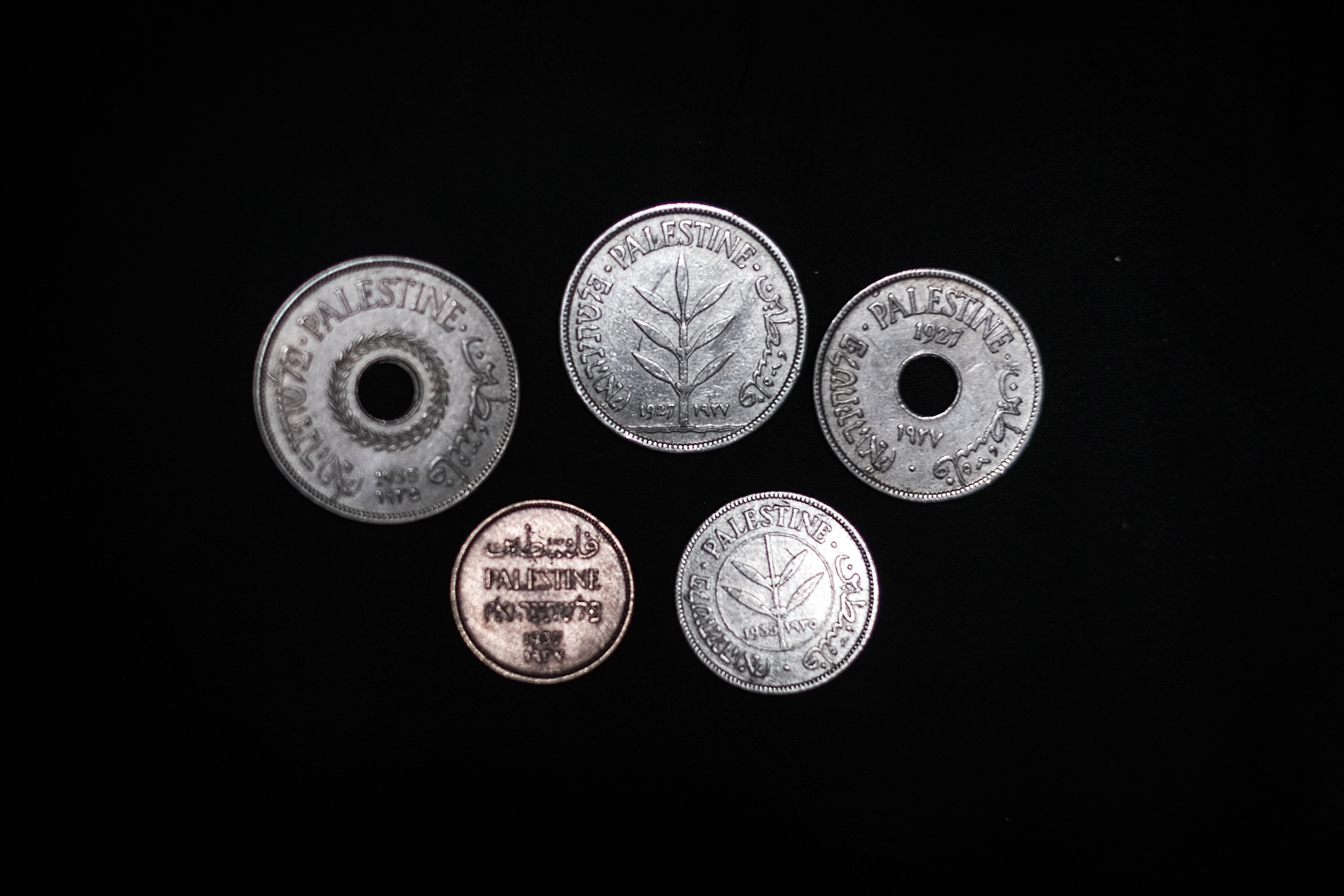 Rare Palestinian coins from the 1920s, printed in Arabic, English and Hebrew. May 10, 2023. (Credit: João Sousa/L’Orient Today)
Rare Palestinian coins from the 1920s, printed in Arabic, English and Hebrew. May 10, 2023. (Credit: João Sousa/L’Orient Today)
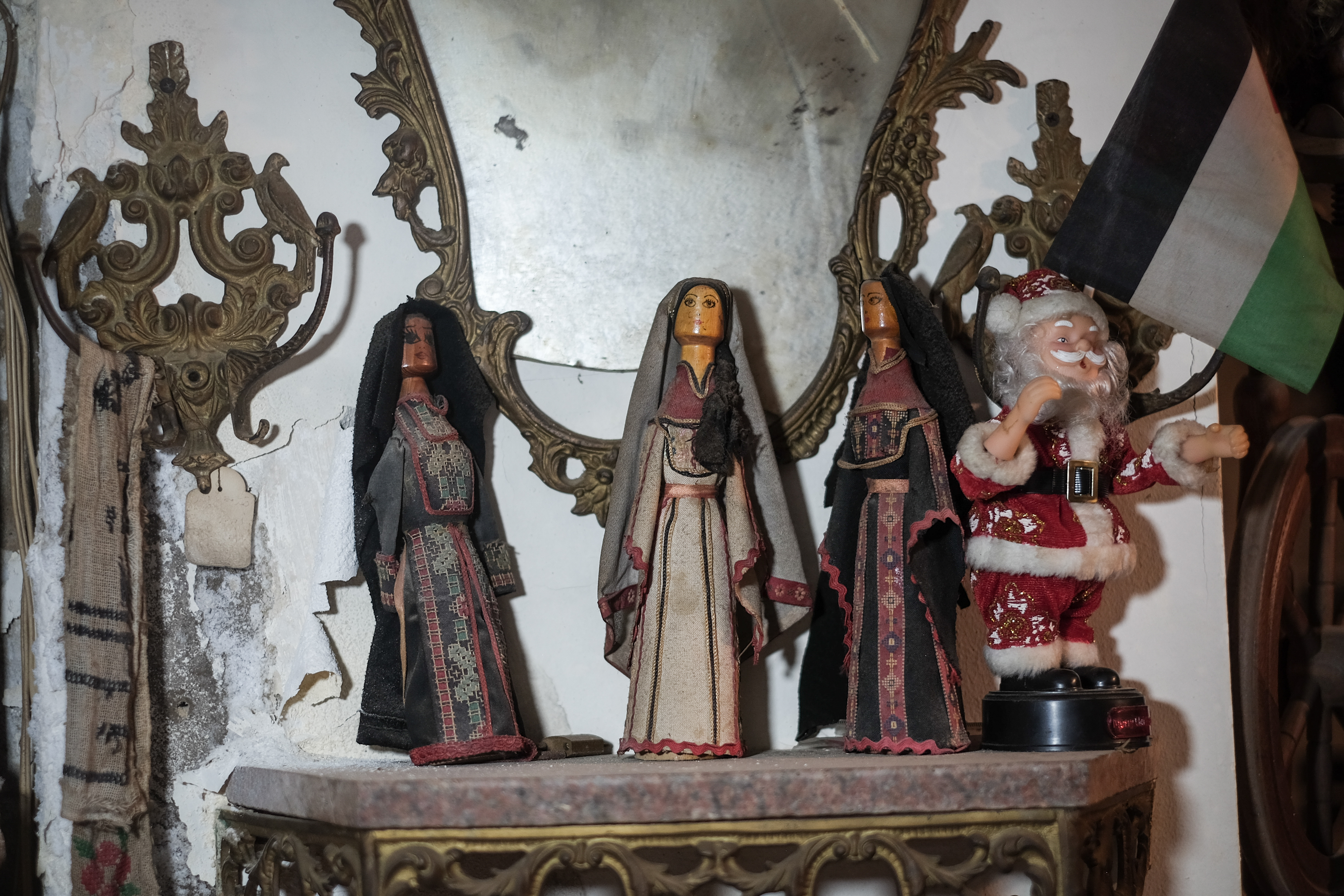 Dolls dressed in miniature traditional Palestinian thobes stand on display at the Memories Museum in the Shatila camp. May 10, 2023. (Credit: João Sousa/L’Orient Today)
Dolls dressed in miniature traditional Palestinian thobes stand on display at the Memories Museum in the Shatila camp. May 10, 2023. (Credit: João Sousa/L’Orient Today)
